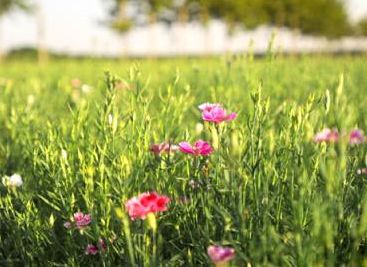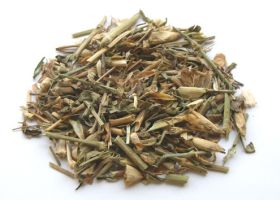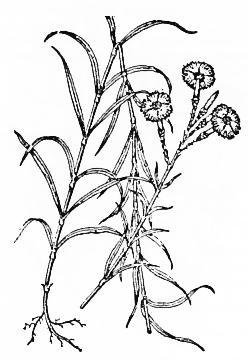- Hot painful urinary dysfunction with burning and pain, with
Talcum-
Hua shi and
Akebia trifoliata- Mu tong.
- Stones in the urinary tract, with
Lygodium
japonicum- Hai jin sha.
- Incomplete, dribbling, burning, and painful urination due to Damp Heat in the
lower Burner, with
Gardinia jasminoides-
Zhi zi. For Heat- induced blood in the urine, add
Imperata
cylindrica- Bai mao gen and
Cephalanoplos
segetum- Xiao ji.
- Amenorrhea due to Blood stasis, with
Salvia
miltiorrhiza- Dan shen.
- Constipation, with
Trichosanthes kirilowii-
Gua lou ren.
[1] Barefoot Doctor's Manual- 1977 Prepared by the Revolutionary Health Committee
of Hunan Province. Original Chinese manual- Victor W. Sidel. Originally published
by Dr Joseph Quin and the Fogarty International centre, Bethdesda (1974). Madrona
Publishers Seattle Washington ISBN 0-914842-52-8
[2] A Complete English Dictionary of Medicinal Terms in Chinese Acupuncture
and Herbalism 1981- Henry Lu Chinese Foundations of Natural Health- The Academy
of Oriental Heritage, Vancouver, Canada.
[3] Translation notes from Gary Seiford and Hocu Huhn- NSW College of Natural
Therapies. Sydney Australia (1982).
[4] Chinese Herbal Medicine Materia Medica- Dan Bensky and Andrew Gamble- Eastland
Press 1986 Seattle Washington ISBN 0-939616-15-7
Images
1.
[1]
2.
tcmwiki.com Retrieved 18
Mar-14
3.
mayway.com
Eugenol, phenylethylalcohol. benzyl benzoate, benzyl salicylate, methyl salicylate.[1]
D. chinensis- saponins.[1]
References
[1] Chinese Herbal Medicine Materia Medica- Dan Bensky and Andrew Gamble- Eastland
Press 1986 Seattle Washington ISBN 0-939616-15-7
 Dianthus
superbus. D. chinensis 瞿
麦 Qú mài
Proud pink Family:
Caryophyllaceae
Dianthus
superbus. D. chinensis 瞿
麦 Qú mài
Proud pink Family:
Caryophyllaceae

 HABITAT:
Found growing on hillsides, edges of open woods and seed patches along stream
banks.
HABITAT:
Found growing on hillsides, edges of open woods and seed patches along stream
banks.